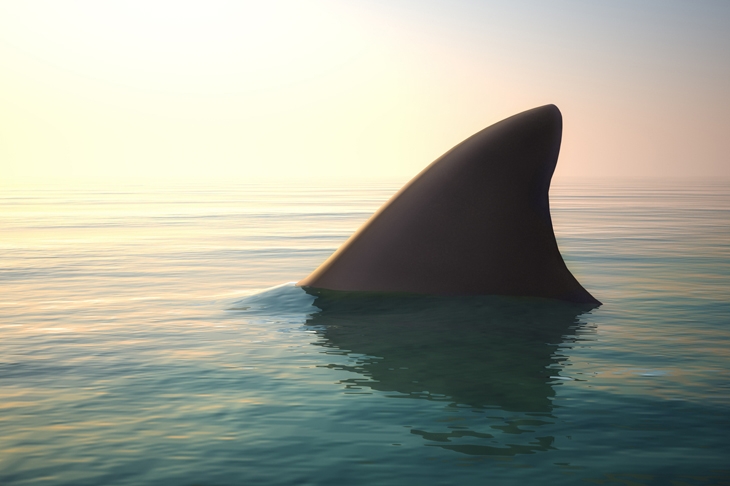The Greenland shark has to be one of the most fascinating creatures of which you’ve probably never heard. Growing sometimes to 25ft, it is the largest flesh-eating shark, longer even than a great white. It dwells in the deepest northern oceans. It eats seabirds, huge fish and seals, most of which it probably surprises and devours on the seabed. The youngest Greenland shark of reproductive age is 100 and the oldest may have been alive when the Mayflower set sail. It is, thus, the longest-lived vertebrate life form on the planet.
Whalers and the native people of the Arctic have hunted it for centuries, primarily for the immense oil-rich liver. Yet catching one is no easy business. As the author notes, the teeth are like ‘over-sized steel traps’. The outer skin is structured so that if you rub your hand along its body in a tail-to-nose direction it cuts you like razor blades. The Germans once imported and used it as a form of sandpaper.
The eyes of Greenland sharks are riddled with large burrowing worms that leave most of the creatures blind. Its flesh smells of urine and contains a nerve gas, trimethylamine oxide, which can have a powerful hallucinogenic effect; hence the title Shark Drunk. If the meat is not prepared properly it can even be fatal, but Inuit once fed Greenland sharks to their huskies, and the mutts could be paralysed for days.
So why on Earth would anyone set out to fish for it in a rubber boat armed with a gaff, 1,000 feet of high-strength line and large chunks of rotten bull flesh as bait? Part of the joy of this strange but utterly engrossing book is that we never quite learn what drives the central narrative thread.
All one can say is that Strøksnes, one of Norway’s most celebrated non-fiction authors, has an friend called Hugo Aasjord, who lives within the Arctic Circle, on one of the Lofoten islands off the country’s northern coast, and comes from a long line of intrepid fishermen. Greenland sharks have been in Aasjord’s blood from birth, and as long as he can recall he’s had a desire to land one. It’s as simple as that. Whether they succeed or not — and I shall leave the matter hanging — is beside the point.
What makes the book such a triumph has little to do with the kind of action generated by landing a big one, and everything to do with Strøksnes’s free association on matters maritime as he sits there, day after day, in his rubber boat, waiting for the beast to bite. It is not a fishing drama, but a work of meditation and wonder with a horizon as wide and open as the far Nordic coastlines that he so beautifully evokes.
Strøksnes ponders a time when Scandinavia was part of a primordial continent called Rodinia that lay where the South Pole now stands. He speculates on the origins of water on Earth, on the foundation of our solar system, on the spatial relationship of light in our galaxy. We learn that the Milky Way is only one of billions of galaxies, yet it alone is 100,000 light-years in diameter.
While relishing his immense canvas, Strøksnes also loves details, especially when they relate to creatures hidden under thousands of feet of seawater. Time after time he descends to the ocean floor to ponder aspects of life every bit as mind-expanding as intergalactic space. There are jellyfishes known as Praya dubia, which can be 130ft long and have 300 stomachs. There are deep-water octopi called Heteroteuthis that emit clouds of electric light as a distraction to predators. A relative from Indonesian waters, which can shape-shift to look like a sea snake or flounder, has blue blood, three hearts and a brain in every arm.
Weirdest of all, however, is the so-called vampire squid, named for its eyes — which, proportional to body size, are the largest in the entire animal kingdom, and can change colour from light blue to blood red. If it is attacked, the squid’s other trick is to bite off one of its own limbs that then emits a blinking blue light to confuse the assailant.
Strøksnes comes from a nation that still undertakes whaling operations, and there is an unflinching toughness of tone as he describes his countrymen’s central role in the slaughter of 200 million cetaceans between 1870 and 1970. As he says himself, ‘The stench of death and putrefaction was indescribable’ and lingered in whalers’ nostrils even decades later. Although the narrative voice is seemingly non-commital there is no doubting Strøksnes’s true sympathies. As he points out, sharks annually kill fewer people per year than do champagne corks; humans, on the other hand, kill around 73 million sharks every year.






Comments